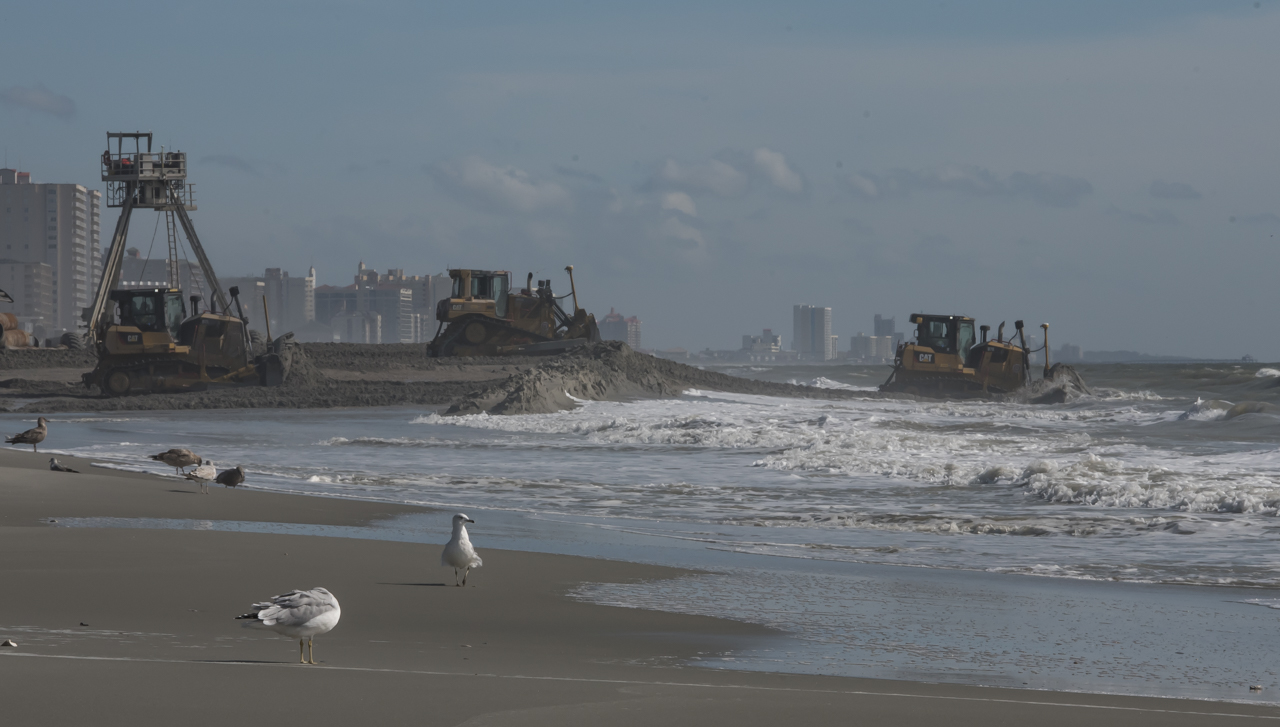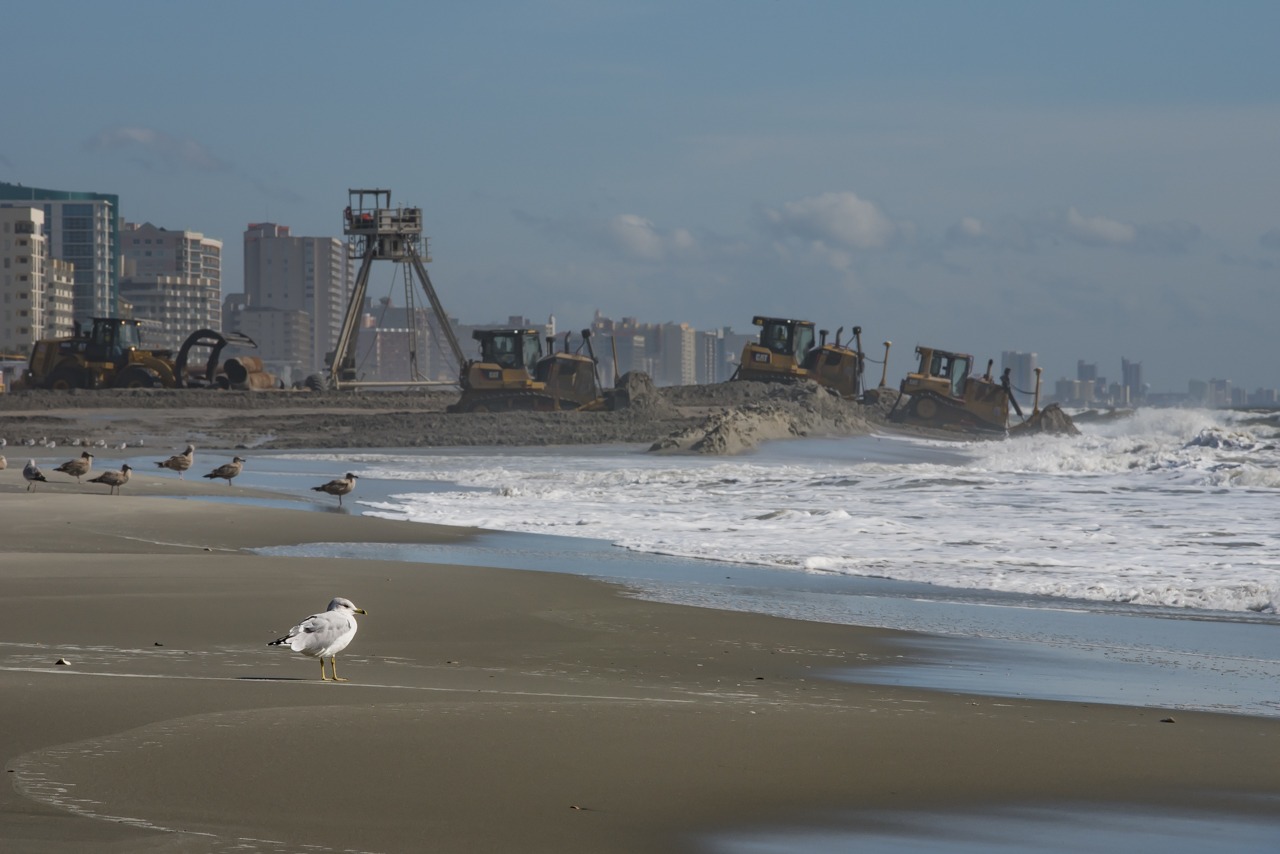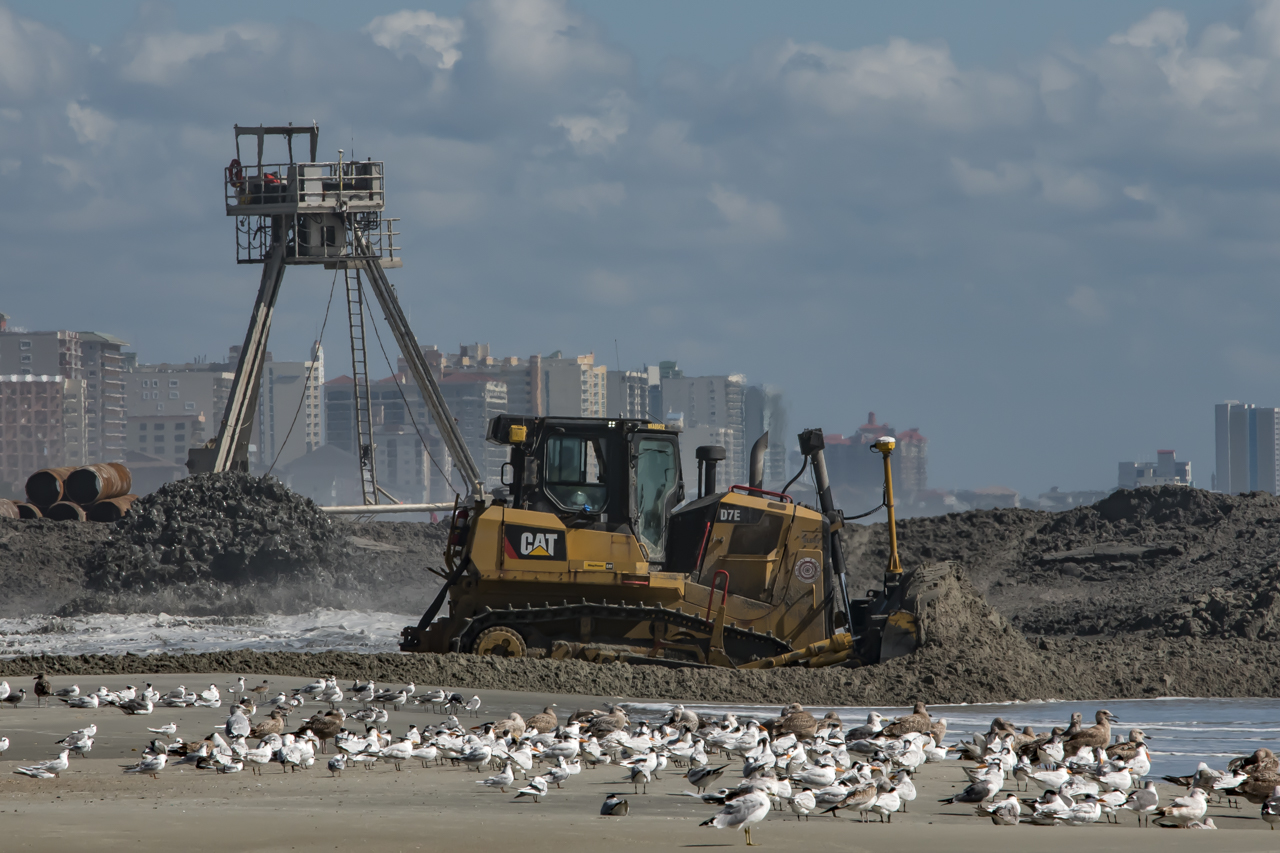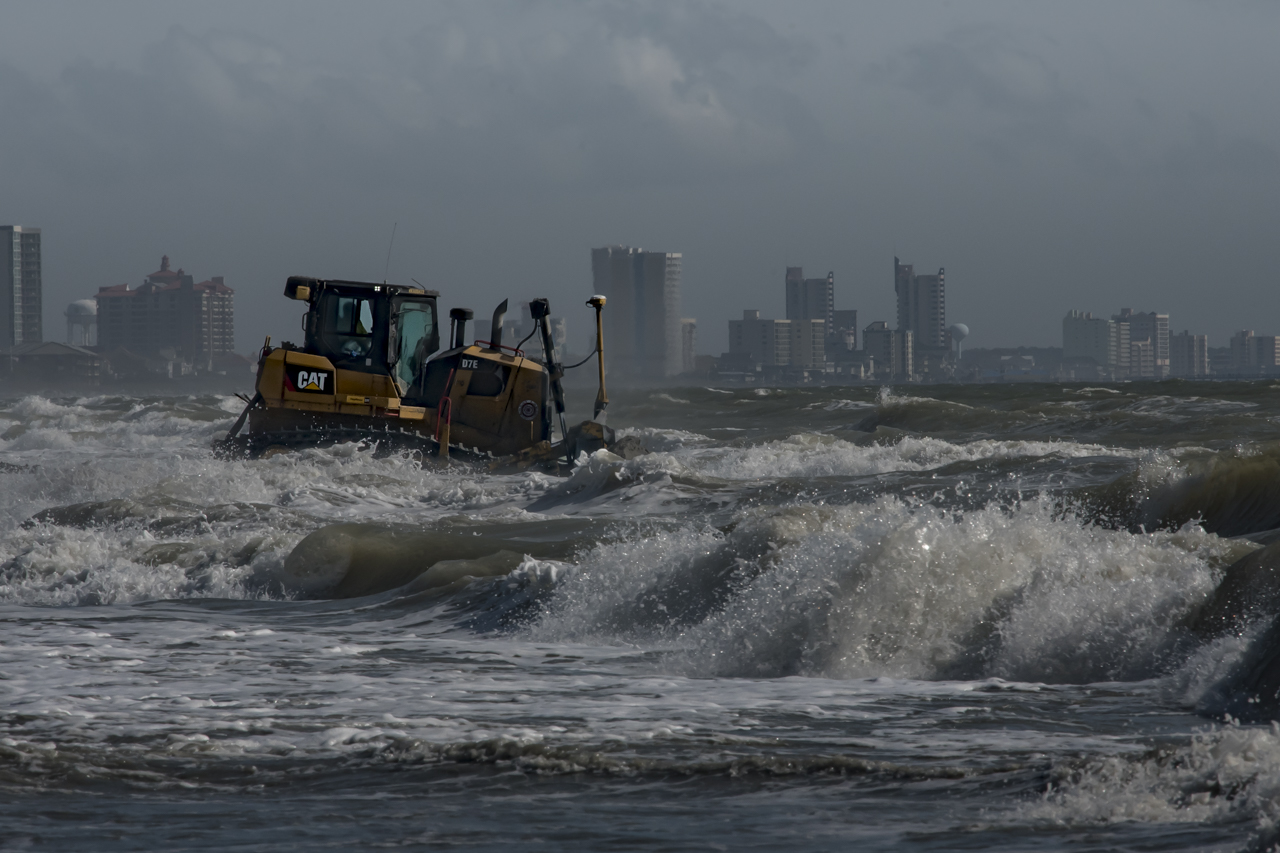Beach Renourishment In Myrtle Beach

Beach renourishment, or beach replenishment, is the practice of adding sand or sediment to beaches to combat erosion and increase beach width. Something a little different on this Blog. I’m going accompany my pictures with a little background of the process and the Myrtle Beach project. Please consider this information either as not confirmed, or presented with my interpretation and opinion.
From 1954 to 2010 Myrtle Beach moved 48 million cubic yards of sand at a cost of 351 million dollars. The present project is a 26.3 million dollar contract awarded to Great Lakes Dredge and Dock Company LLC. It is being funded through federal emergency beach rehabilitation funding from hurricane Matthew. Along with cost-shared construction funding appropriated through congress. The contractor works 24 hours a day, seven days a week during the construction period. Usually completing up to 500 feet per day. (cited from the Myrtle Beach Visitors Bureau) Following the dredging project, the city will pay another one million to have about 50,000 cubic yards of sand delivered to help re-establish dunes.
When looking at the process, it is difficult to find a true evaluation of the Pros and Cons. Most studies of beach renourishment and its impact on the environment are performed by project promoters or interested parties. These reports lack rigorous scientific parameters.
Here are some generally agreed upon conclusions from various sources
- The sudden input of sand can kill all the animals living on the beach, or at a minimum, it interrupts sea life and disturbs the natural order of sea life.
- It will make the nearby seawater muddy, which can smother marine life.
- The new sand may not be the same grain size or chemical makeup of the natural sand, changing the habitat that beach animals rely upon.
- Sea turtle nests require certain grain size and chemical make up to produce viable, even sex ratio offspring.
- Sand grain size is also important for turtles: if it’s too large or too small, the weight of the sand could crush eggs or make it impossible for turtles to dig into or out of nests.
- Populations of clams and crabs on or near the shoreline have declined when sand was deposited but seemed to recover within a year of deposition.
- Beach nourishment is not a long-term solution. Waves and storms will erode away the additional sand, and nourishment will have to be repeated.
- The new sand is not as compact, therefore beach nourishment, on average, actually erodes 3x faster than regular beach sand.
How it is done
Beach renourishment starts by dredging sand from off shore by using a ship called the Hopper Dredge (not shown). The dredge lowers one or more dragheads that move slowly along the seabed vacuuming up material. This material is then agitated into a sand/water slurry and pumped through a discharge pipe to a booster pump (shown here). The pipe then continues to the beach area.

This picture gives an overview of the work on the beach. You can see where this renourishment started toward the top of the picture. The beach is obviously wider. If you look close, notice the discharge line that carries the sand slurry coming out of the water from the booster pump and then turns down the beach. The slurry is directed to a pond like area where the bulldozers are working. Here the sand settles out and the dozers push it toward the water.

The structure parked on the beach in the picture above, and shown in the water in the picture below, is known as the C.R.A.B. Short for Coastal Research Amphibious Buggy. It uses GPS and takes measurements of the ocean floor. It is basically checking for the wanted profile of the sand placement as directed by the Army Corps of Engineers.

Setting up the pipe

Starting to pump the sand slurry

Pushing Sand
My Conclusion: Property owners and tourists coming to the beach and spending money make it happen.






